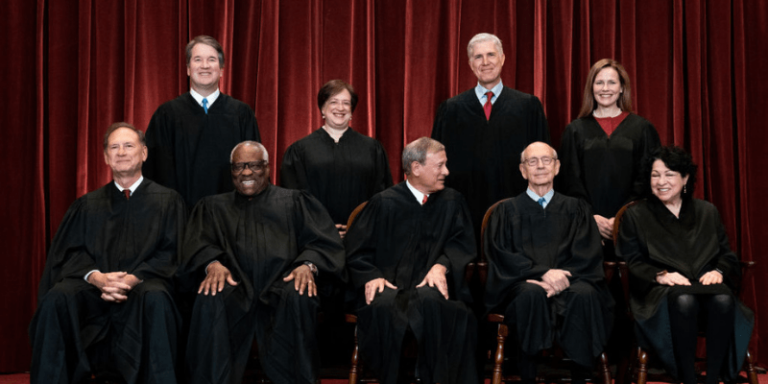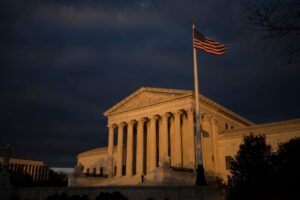The Supreme Court – What it Does
The Constitution sets up the Supreme Court in Article III.
By: Scott D. Cosenza, Esq. | October 8, 2020 | 418 Words

Supreme Court Justices (Photo by Erin Schaff-Pool/Getty Images)
The United States Supreme Court is the ultimate decision-maker for legal disputes in the United States. Judges on the Court are called “Justices.” It is made up of the Chief Justice of the United States, and eight lesser, or “Associate Justices.”
Once the Supreme Court rules on an issue, its judgment will be the law unless it later changes its mind, or a new law is passed.
The Constitution sets up the Supreme Court in Article III. Unlike lower-level courts, several judges vote on a case, making them like a jury. How many Justices are on the Court is set by federal law, not the Constitution, and that number has been nine since 1869.

(Photo by Drew Angerer/Getty Images)
Justices
All Justices are chosen the same way. They are nominated by the President, and then the Senate votes to approve or reject the candidate.
Supreme Court Justices serve lifetime terms. That doesn’t mean that they have to stay on the job until they die, but they cannot be fired if the President or Congress does not approve of their rulings. Supreme Court Justices may be removed only through impeachment, just like the President. The life-term is to protect Justices from the politics of the moment. They are not bound to the short-term desires of the electorate, but the long-term interests of the country and its laws.
Cases
There are two pathways for cases to reach the Court.
- When one state sues another state, or if a case involves a U.S. Ambassador, among others, the Supreme Court has “original jurisdiction.” That means the case may be brought directly to the Court for a judgment. Those cases are rare compared to the other type.
- Most cases are brought under the Court’s “appellate jurisdiction.” These happen when one party to a legal case is not satisfied with a lower court’s ruling. They may appeal the case to the Supreme Court for another chance.
 The Constitution does not say how the Court should decide which appeals to take. The Justices determine that.
The Constitution does not say how the Court should decide which appeals to take. The Justices determine that.
Rulings
When deciding cases, a simple majority is needed for a ruling.
Justices on the Supreme Court can write their own opinion on a case, explaining their thought process. They may otherwise sign their name to another Justice’s opinion.
Before the COVID-19 epidemic, the Court heard all its cases at the Supreme Court building in Washington, D.C., but begun hearing virtual arguments when the pandemic broke out.
















